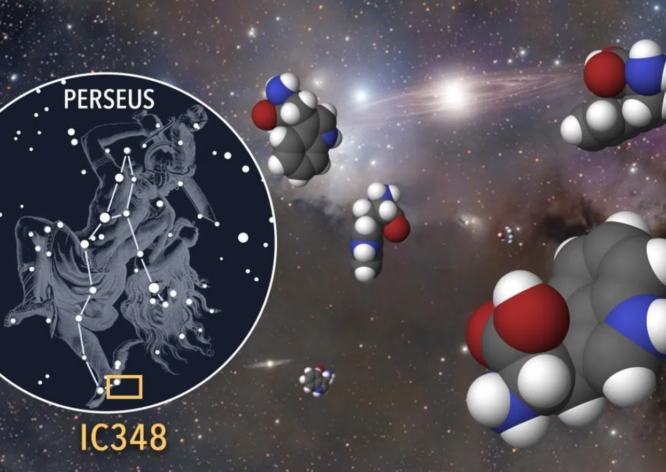Tryptophan, one of the twenty amino acids considered essential for life on Earth, was discovered in a stellar system designated IC 348 with the Perseus molecular cloud, a region of space in the constellation Perseus where low-mass stars form.
Monthly Notices of the Royal Astronomical Society (MNRAS) has chosen to publish a paper describing the findings.
Susana Iglesias Groth, the study’s author, states, “Given the infrared spectral coverage and the large spectroscopic database from the Spitzer telescope, this amino acid was the obvious candidate to search for in space.”
Tryptophan has several characteristics at infrared frequencies. Due to the close proximity of the Perseus cloud, astronomers are able to investigate the chemical composition of the stellar nursery with unprecedented precision.
Amino acid required for life in star nursery IC 348.
The molecules within IC 348 will be incorporated into both infant stars and planets that form from the residual material from the star’s birth. The observations assist scientists in comprehending how the chemical components required for life as we know it on Earth can wind up on the surfaces of exoplanets.
IC 348 has previously yielded water, carbon dioxide, hydrogen cyanide, acetylene, and benzene, as well as a class of organic molecules known as policyclic aromatic hidrocarbons (PAHs).
This is the first time any amino acid has been detected in a star-forming region, as well as the first time tryptophan has been detected in a deep space environment.
The detection of tryptophan raises the possibility that additional amino acids are also present in the area. The presence of these molecules in the star-forming environment can hasten the emergence of life on exoplanets that form around nascent stars.

